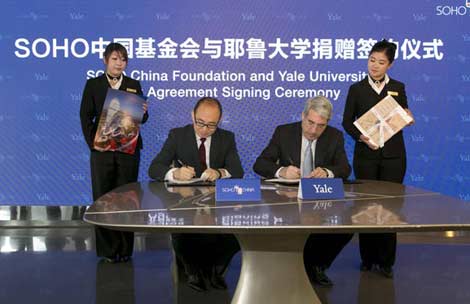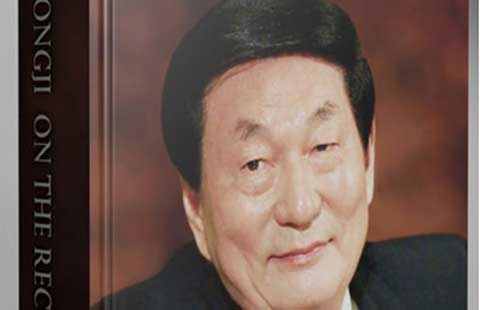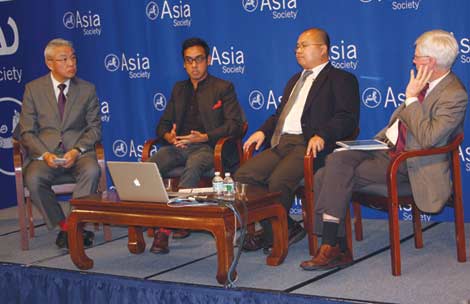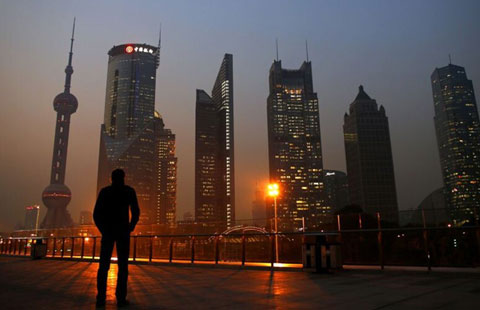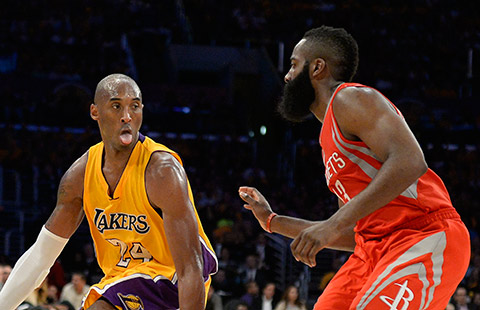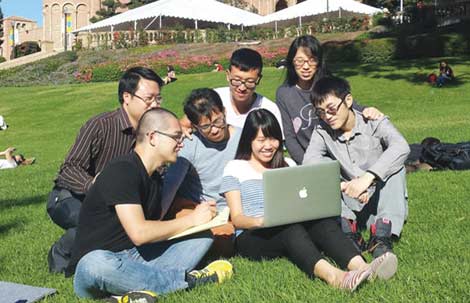US professor takes on role of media in cross-cultural dialogue
Updated: 2014-07-25 16:37
By Meng Lin in Washington(China Daily USA)
|
||||||||
Tsinghua University professor Rick Dunham spoke on issues confronting cross-cultural media and journalism on Thursday including the interpretation of works from artists, new technologies and social media at the Art Museum of the Americas.
During his talk, which was titled "Bridging the Perceptions: Covering the Blind Spot of Journalism in Cultures," Dunham spoke about the role of cross-cultural communication during the ChinAmericas Culture Dialogue.
Having more than three decades of journalism experience including working his way up to White House correspondent and Washington bureau chief, and currently serving as a visiting professor at Tsinghua University, one of China’s most prestigious, Dunham expressed observations on cross-cultural media and news coverage.
"Culture differences don't mean that one is better, and one is worse, what is right and what is wrong, it just means that there are differences," Dunham said. "We have to understand what the differences are, and why there are differences, and figure out how to bridge those differences and move ahead with better journalism."
Culture impacts everything we do: the simplest phrases can be steeped in cultural context that even seemingly innocent exchanges between people can be loaded with cultural differences waiting to expand into misunderstanding and tension, he said.
"Their biggest problem for inter-cultural communications between China and Latin America would be the language gap," said Dunham.
For journalists, it is difficult to avoid stereotypes and perspectives that they have perceived from media and news coverage in their native languages. Therefore finding a neutral and objective perspective is most important for journalism, according to Dunham.
"For thirty five years being a reporter, I feel like the experiences in China have made me a better teacher and a better person by learning other professors with their teaching styles," Dunham said. "What I love about Tsinghua is that it’s a very free area for discussion."
Dunham noted that there are many interesting stories and tales that are not just about breaking news. There is so much changing in China’s cultural arena that isn’t being covered very much in the west.
"The problem has a flip side too," he added.
In addition to having the world’s biggest Internet user base - 513 million people, more than double the 245 million users in the United States - China also has the world’s most active environment for social media. More than 300 million people use it, from blogs to social-networking sites to microblogs and other online communities, according to McKinsey Quarterly.
"Social media is revolutionizing communication both in China and the Americas. But it’s really less a part of shaping precipitance of each other right now." Dunham said.
About 88 percent of the people in China who use social media are under the age of 40. And people under the age of 30 overwhelmingly get both information and breaking news from social media rather than traditional media outlets.
Chinese mainstream media still play an important role in terms of conducting authoritative news reporting. Dunham held CCTV America (the English-language news channel run by China Central Television) as an example, saying it doesn’t focus everything through the lens of US foreign policy. Dunham said, US media coverage sometime lacks "cultural depth".
- Xinjiang publishes anti-terror brochures
- Security pact sealed with Afghanistan
- President Xi encourages international cultural exchanges
- Premier Li: China willing to help Afghan infrastructure
- Chinese FM: China, Asia-Pacific become community of shared destiny
- Foreign minister remarks on possibility of China-Japan summit
Most Viewed
Editor's Picks

|

|

|

|

|

|
Today's Top News
VW defends safety of recalled New Sagitar
Former premier makes Hurun philanthropists list
Xinjiang publishes anti-terror brochures
SOHO endows $10m to Yale
Cook and Ma talk about partnership
Language a barrier to healthcare for Asian Americans
China businesses need innovation: VC
Security pact sealed with Afghanistan
US Weekly

|

|
